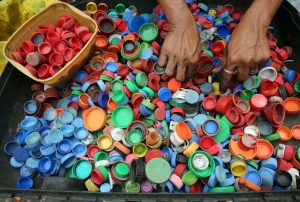Ground resin, virgin polypropylene, or some water-based production resin have been traditional methods for cleaning extrusion screws between runs for years. Other options include using powdered detergent, carbonated drinks, and even popcorn. Regarding these procedures, John Pizzo, Technical Engineer at Asaclean (a mechanical purge compound), assures that they are not recommended for several reasons. “If you are using regrind or virgin resin, you are not cleaning your machine completely. Virgin resin is not a cleaning agent and will not clean the machine. It will just slide over the already bonded resin inside the machine, ”says Pizzo. And he adds that eventually once the resin layers degrade, the processor will have problems with carbon residue and coloring lines.
On the other hand, regrind purging can create more problems than it can solve. This type of resin has a high probability of degradation during the second or third purge run. Obviously, removing the screw and doing a manual cleaning will ensure that the machine is clean and free from contamination. However, this practice involves several hours of work and lost machine production time. Also, purging with polypropylene prior to disassembling the screw will leave the spindle with a very sticky mass that can be dangerous to the cleaning technician when disassembling the machine.
Commercial Purge Compounds (CPC) have come onto the market as an option to clean the machine between jobs. According to the companies that manufacture these products, their use provides a notable reduction in downtime, rejects during production and speed up ignition times. However, to achieve its maximum performance, it is necessary to take care of several variables. Processors must consider a number of parameters about CPCs. Some material and color changes are easy, other applications with CPCs can be more difficult. Also the condition of the machinery, the type of materials and colorants used, among others, can be decisive factors.
Types of purge compounds
Commercial Purge Compounds (CPCs) fall into two broad categories: mechanical and chemical. Chemical purge compounds react with the resin inside the machine in such a way that they can be easily removed with the next resin. On the other hand, the mechanical purging compounds act as a drag agent that physically detaches the resin from the screw and the barrel and allows its evacuation from the system. Often times this type of purge compound has an “active” ingredient such as small acrylic particles embedded in a matrix of polyethylene or other inert polymer. At this point it is necessary to be alert, because sometimes the acrylic does not melt completely and can be abrasive. Additionally, acrylic particles tend to leave a residue in their wake that can contaminate the next resin mix run.
Some mechanical CPCs are engineering resins with high affinity for polymers, but very low affinity for metals. Like the other mechanical purge systems, these work by friction with the polymer residues deposited on the parts of the machine and then drag them out of the mixing system. Pumping these engineered purges is much easier due to their low affinity for metal, which greatly reduces overall purge time.
Regardless of the type of purge compound used, CPC manufacturers agree that their products can reduce or, in some cases, eliminate carbon residue, coloring lines, and even the need to disassemble the extrusion screw. .
And the cost?
One of the high points of CPCs is associated with their price. Many plastic processors claim that they are very expensive. However, there are many hidden expenses that can be minimized with the use of a high quality CPC. With customers continually requesting more resin types and colors, masterbatch divisions must continually change to meet demand. Every machine stop due to a change in material or color or a screw disassembly represents lost profit. This means operating costs as well as losses in opportunity costs. Take this calculation into account to make your decision regarding the procedure for cleaning your machines.





